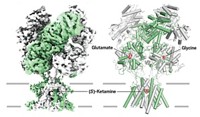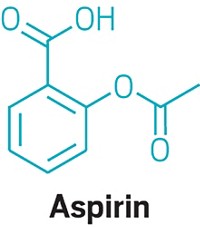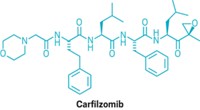Advertisement
Grab your lab coat. Let's get started
Welcome!
Welcome!
Create an account below to get 6 C&EN articles per month, receive newsletters and more - all free.
It seems this is your first time logging in online. Please enter the following information to continue.
As an ACS member you automatically get access to this site. All we need is few more details to create your reading experience.
Not you? Sign in with a different account.
Not you? Sign in with a different account.
ERROR 1
ERROR 1
ERROR 2
ERROR 2
ERROR 2
ERROR 2
ERROR 2
Password and Confirm password must match.
If you have an ACS member number, please enter it here so we can link this account to your membership. (optional)
ERROR 2
ACS values your privacy. By submitting your information, you are gaining access to C&EN and subscribing to our weekly newsletter. We use the information you provide to make your reading experience better, and we will never sell your data to third party members.
Pharmaceuticals
Two Drugs Can Be Better Than One
Study reveals that one diabetes drug’s side effects can be mitigated by a second drug
by Stu Borman
October 14, 2013
| A version of this story appeared in
Volume 91, Issue 41
Two drugs can be better than one when one counteracts the other’s side effects. A recent study shows a way to predict molecular interactions that make this possible. Ravi Iyengar of Icahn School of Medicine at Mount Sinai and coworkers also determined that side effects of tens of thousands of other drugs might be mitigated in a similar way (Sci. Transl. Med. 2013, DOI: 10.1126/sci translmed.3006548). Their work suggests that this is a strategy drug companies might want to pursue. The researchers probed FDA’s publicly accessible database of adverse drug interactions to find drugs that might reduce the relatively high incidence of heart attacks in patients taking GlaxoSmithKline’s diabetes drug rosiglitazone. The search revealed that patients who take both rosiglitazone and another diabetes drug, Amylin Pharmaceuticals’ exenatide, experienced significantly fewer heart attacks than other rosiglitazone users. Computational modeling enabled the team to predict the biomolecular target interaction that enables exenatide to exert its mitigating effect, and they confirmed that mechanism in mouse studies. Further analysis by the group showed that more than 19,000 other drug combinations might be similarly beneficial.





Join the conversation
Contact the reporter
Submit a Letter to the Editor for publication
Engage with us on Twitter